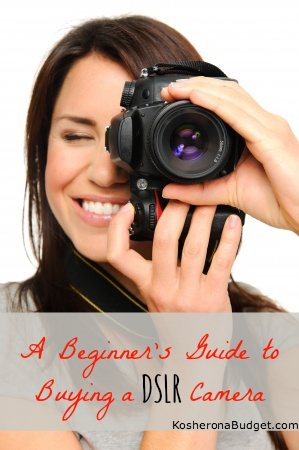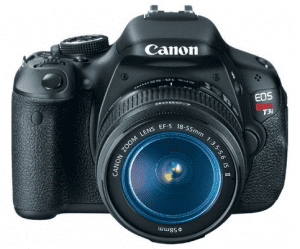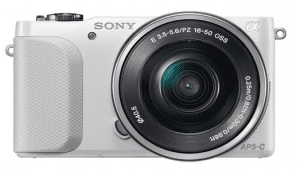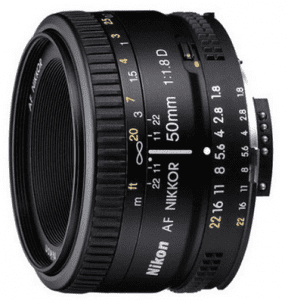
With all the camera deals we have seen over the past week, I decided to ask my friend Miriam from Overtime Cook to share her expert insights with us. When you check out the pictures on her food blog, you’ll see immediately why I’m so thrilled to have her guest posting today.
Entering into the world of DSLR photography can be magical and exciting, but also really confusing. My friend Mara asked me to step in and try to demystify the process, and I am thrilled to oblige. As a freelance food photographer as well as someone who sells cameras for a living, I am constantly being asked about which camera model would be the best choice. Here’s a basic guide to make your decision easier.
Are you ready to purchase a DSLR camera?
Before buying your new camera, the first question to ask yourself is: “is a DSLR right for me?”
If you’re looking for greater control over your pictures, the answer is “yes!” However, if you’re simply looking for better photo quality or a quick way to improve your photos, there may be a better option for you.
Mirrorless Cameras
If you’re looking for a camera with better image quality than your smartphone or point and shoot can offer, but you don’t want to lug around a heavy DSLR camera, or don’t need all of the lens and setting options that a DSLR can offer, you might want to opt for a Mirrorless Camera.
The Canon EOS M is a great mirrorless option that costs just a bit more than a quality point and shoot. The Nikon 1 S1 is another great option, which also is not very expensive. Sony’s NEX3 is another great mirrorless option that won’t break the bank.
All of these cameras have interchangeable lenses, larger sensor sizes and better image quality than you will find on the standard point and shoot, but all of them are rather compact, which make them a great option if you’re on the go!
So you are ready for a DSLR. Now what?
Firstly – the million dollar question: Canon or Nikon?
There’s no easy answer to this question. You can ask 100 different photographers which to choose, and you’ll get 100 very passionate answers. It’s basically a requirement of being a “real” photographer to be 100% sure that “your” company is 100% better.
I wrote a detailed post about this issue, which you can read here, but I will give you the short version here: Both Canon and Nikon are excellent companies with great reputations. You can’t really go wrong with either. Just pick a brand and don’t look back!

So which model should I get?
There’s a reason some models are called “entry level” and others are considered professional grade. If you don’t (yet) know much about photography, don’t be tempted to spend an extra couple hundred dollars on a pro model. Get the entry level model, learn it, then consider an upgrade in a couple of years!
The most basic models are the Nikon D3100 and the Canon T3 (not to be confused with the Canon T3i). Both of these models retail for under $500 for the camera body with a basic kit lens. These models are basic cameras with relatively simple specs, but great for someone who is just starting out and wants to do it on a budget.
If you are able to spend a bit more on a better entry level camera, you will find that the step up cameras do better video, have better image quality, more features, and better screens. The Nikon options would be the D5100 or the D5200, while the Canon options would be the T3i, T4i or T5i. Any of these are great options that will really help you break into the DSLR world!
Kit lens or body only?
As you probably know, a DSLR doesn’t have a built in lens. Rather, you will need to purchase a lens with your camera. Most entry level DSLR cameras have the option to purchase it with an 18-55 (read this post if those numbers confuse you!) “kit” lens. This lens is a lower quality zoom lens, which is a good starter option.
However, my recommendation is skip the kit lens! The 50 mm f/1.8 (there’s both a Canon and a Nikon version of it) is a great starter lens, and much better image quality than the kit lens.
It usually costs between $100 and $150, so it’s a very affordable option as lenses go. 50 mm is about the same focal length (range of vision) as the human eye, so the lens will not zoom, but will allow you to see roughly your natural range of vision in your pictures.
I bought my camera, now what?
Don’t be tempted to think that buying the camera was all you needed to do to improve your photography! Learn to use your camera. Take if off of auto mode. Read your manual. Read online tutorials. Learn as much as you can about your camera to really make the most of it.
Confused by all the jargon and don’t even know where to start? I’ve got a post that covers all the basics. Read through this to get you started.
And of course, the only way to really improve your photography (no matter which model you choose!) is to practice, practice, and then practice some more. I know it’s a total cliche, but it became one for a reason!
And the number one tip for photography? Enjoy it!
Miriam is a recipe columnist for Ami’s Whisk magazine, a freelance food photographer and the food blogger behind OvertimeCook.Com. She earns her “Overtime Cook” title by doing all of this on the side of a full time job! Connect with Miriam on Facebook, Pinterest or Instagram.


















Interesting but very limited article. There are several other DSLR manufacturers that were not mentioned, perhaps due to the brevity of the piece. A follow-up with a little more information would be great. This article will at least give readers some direction, should they wish to know more.